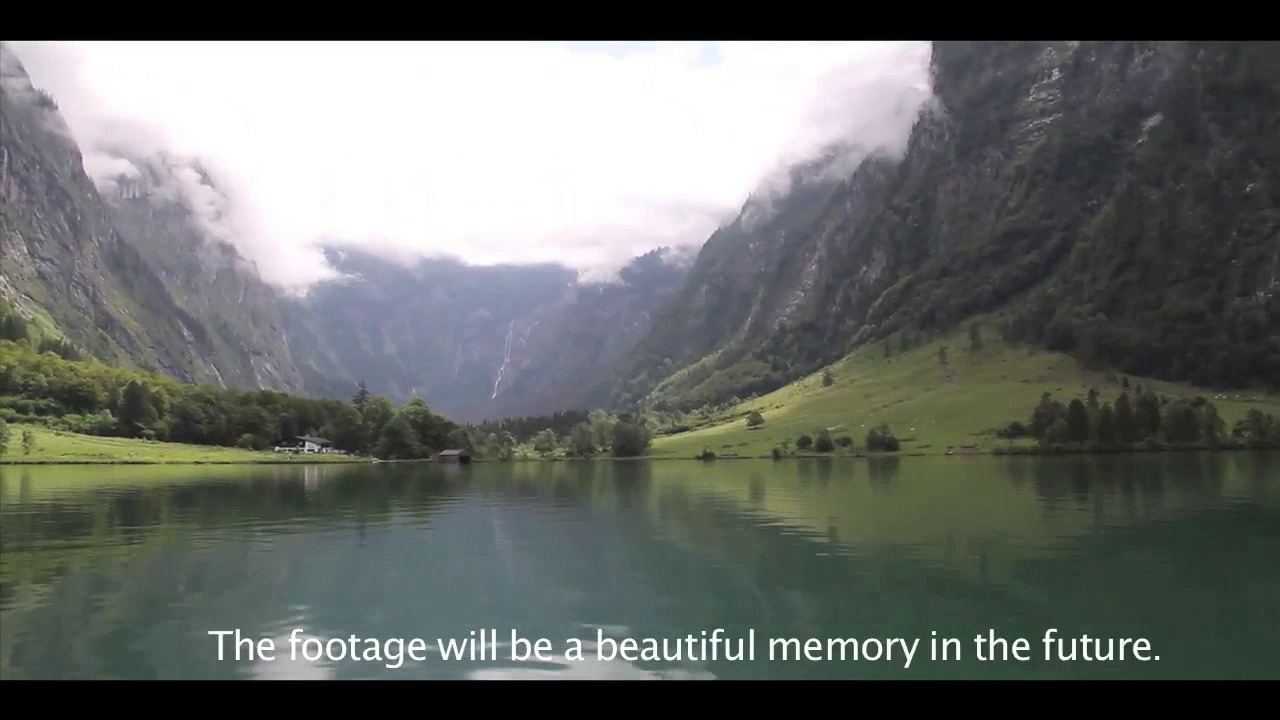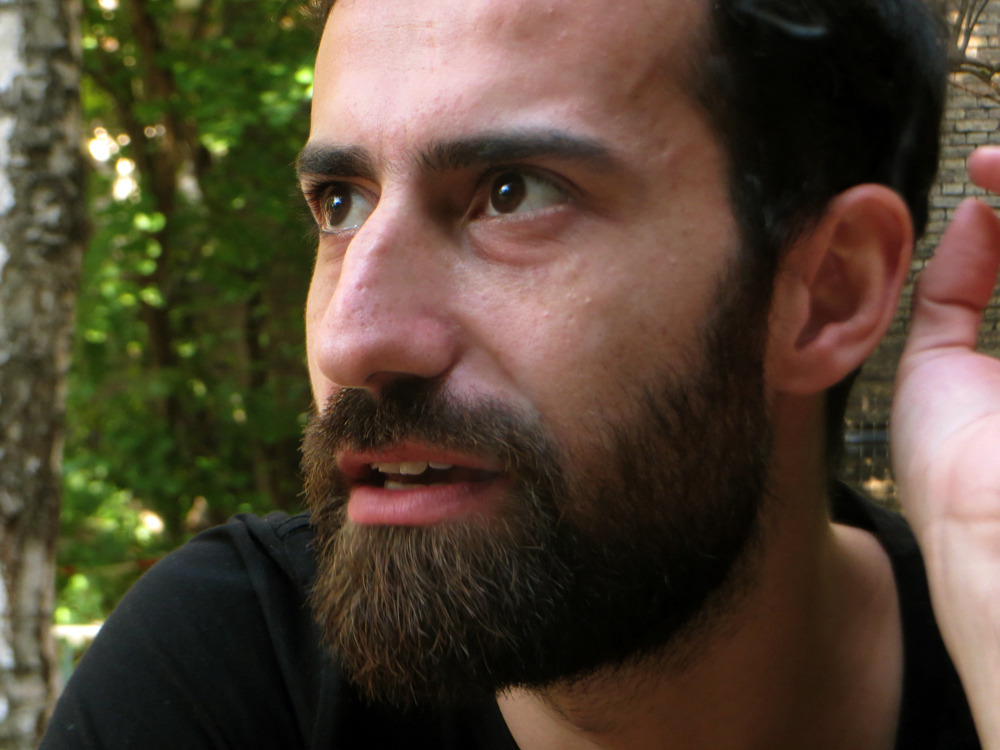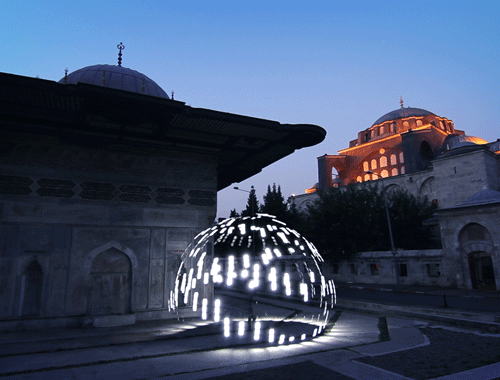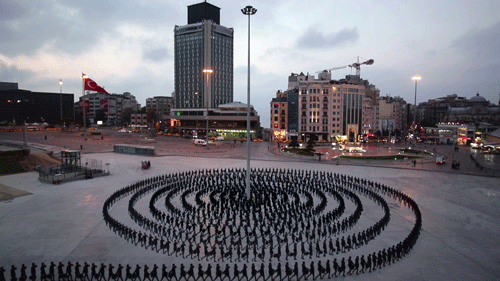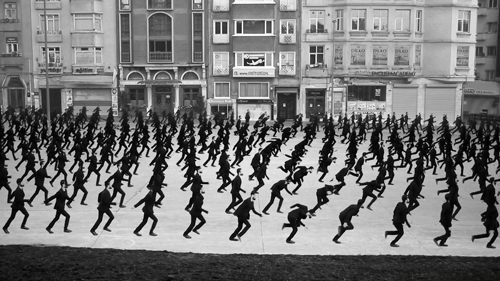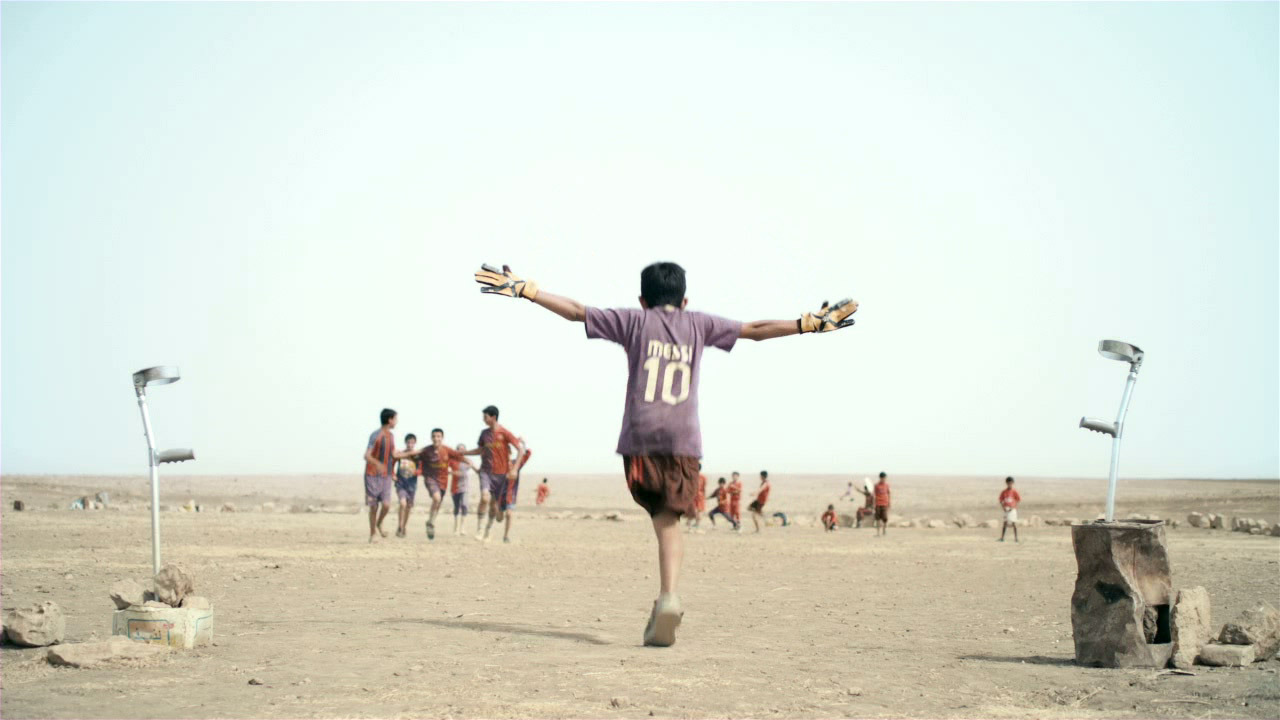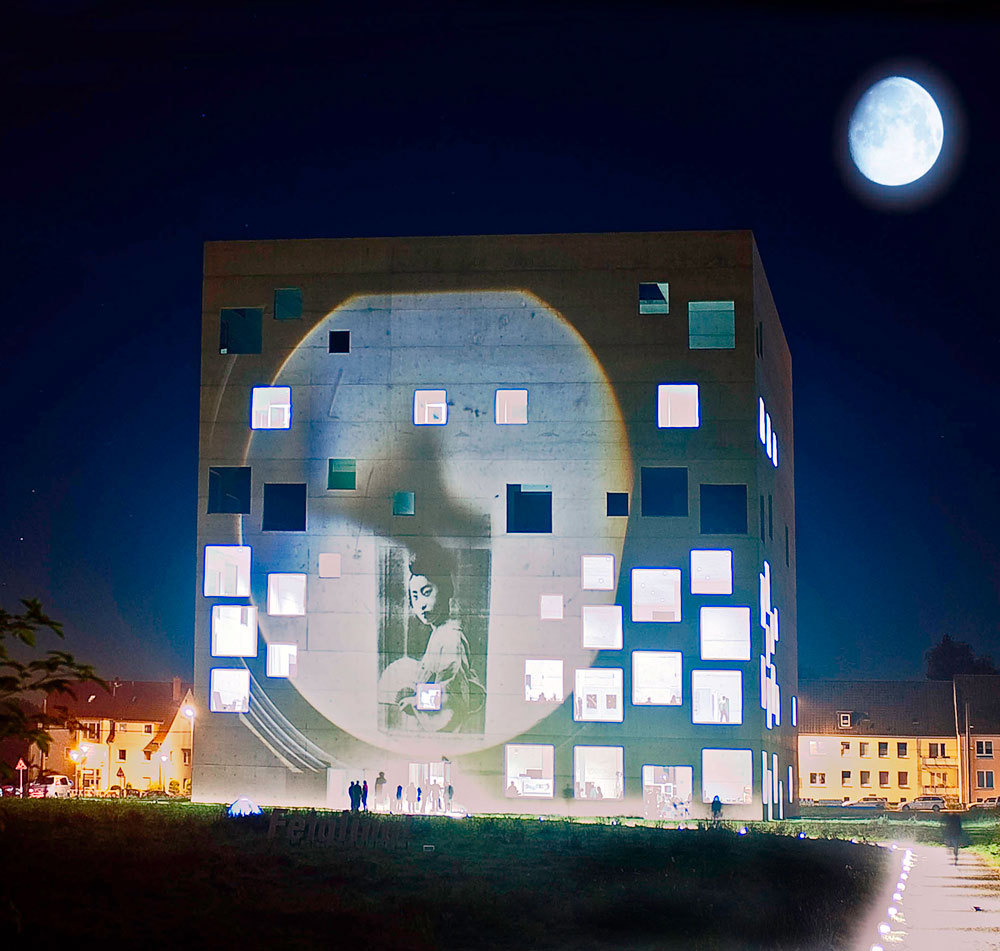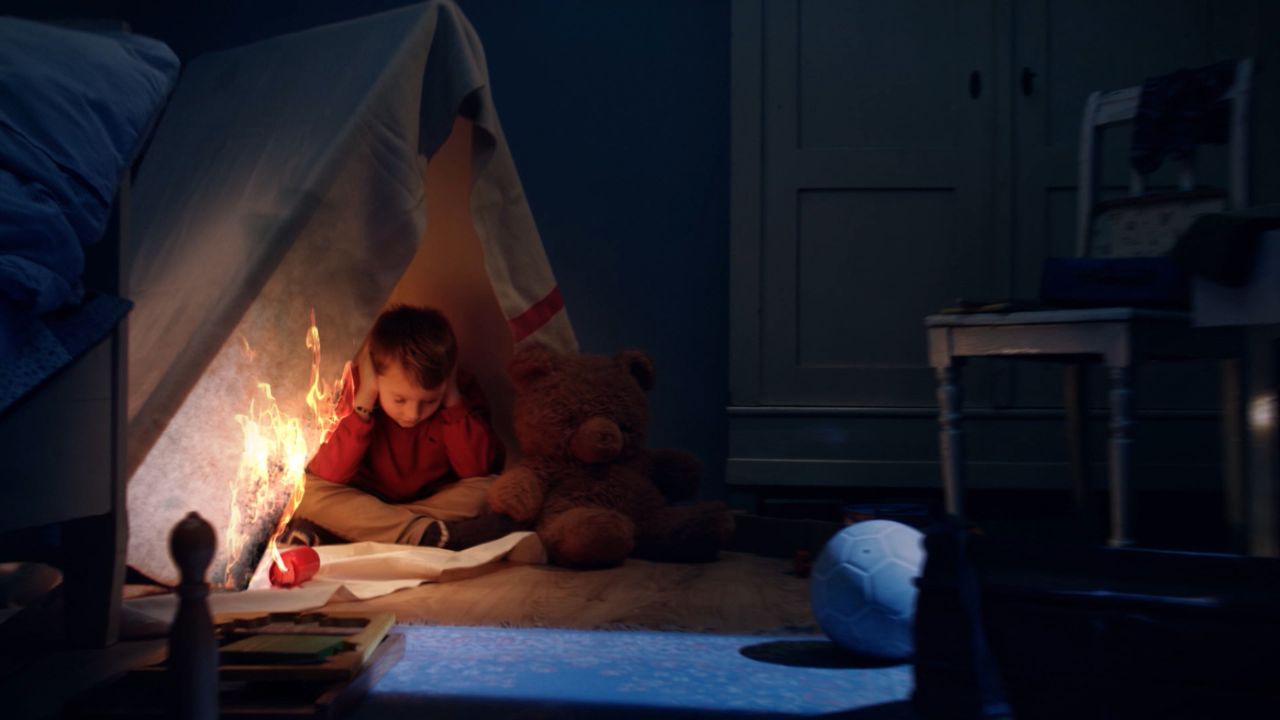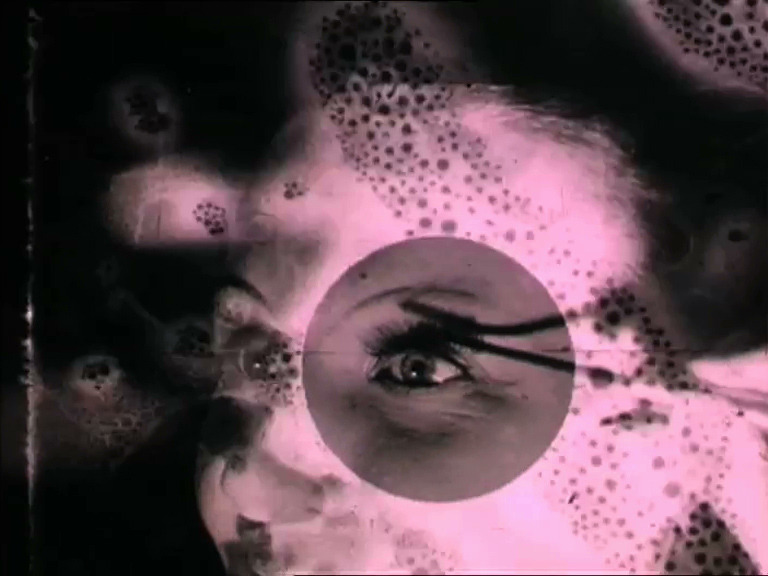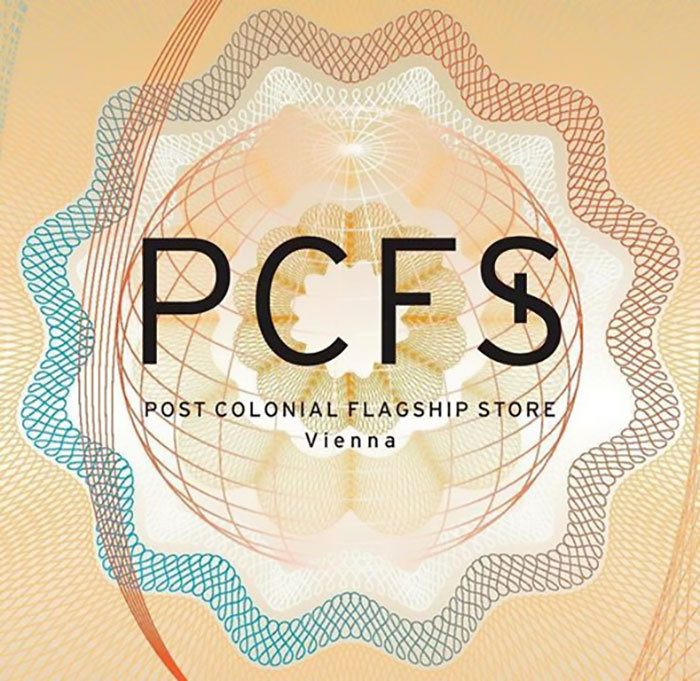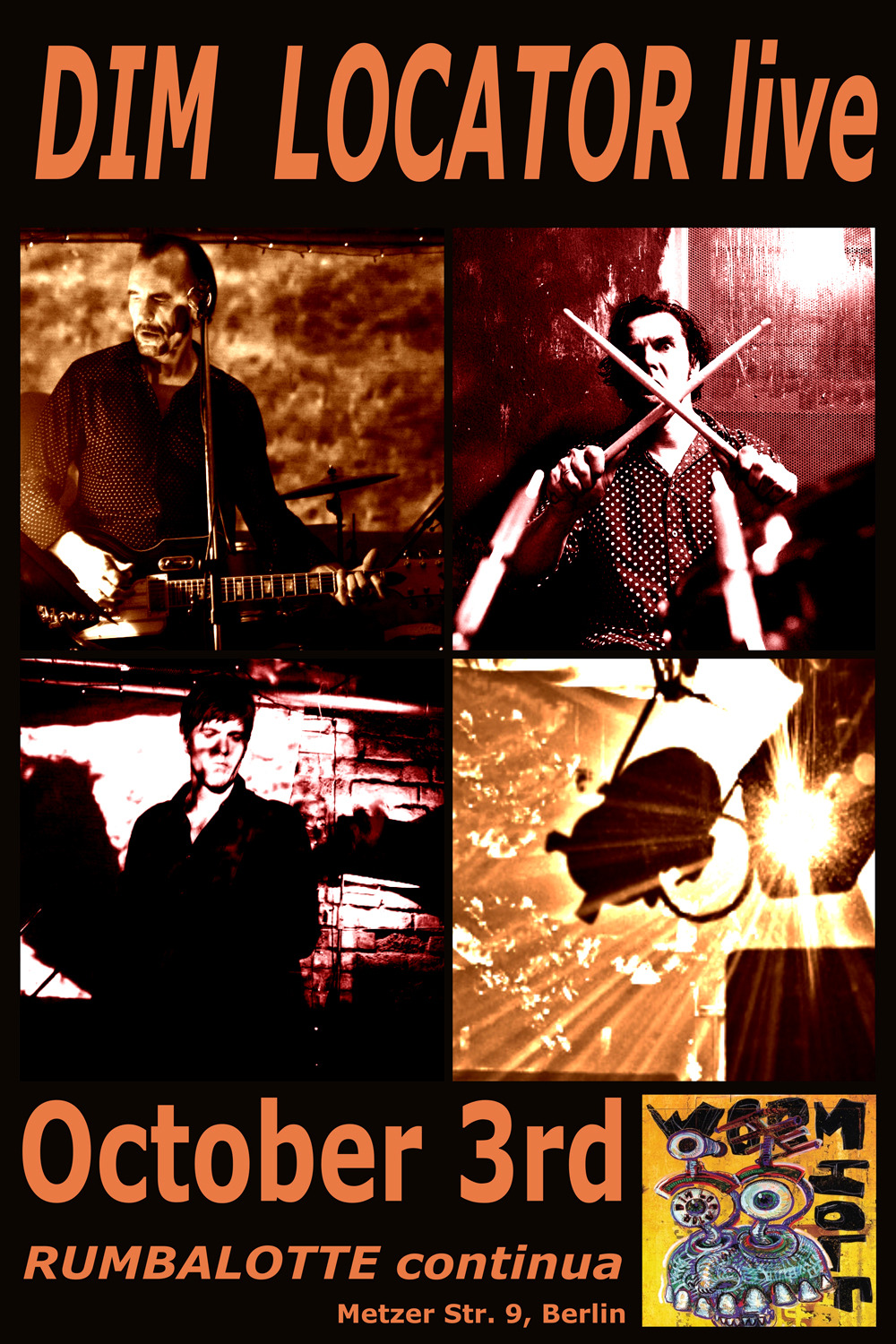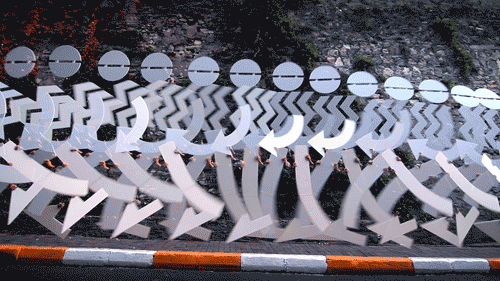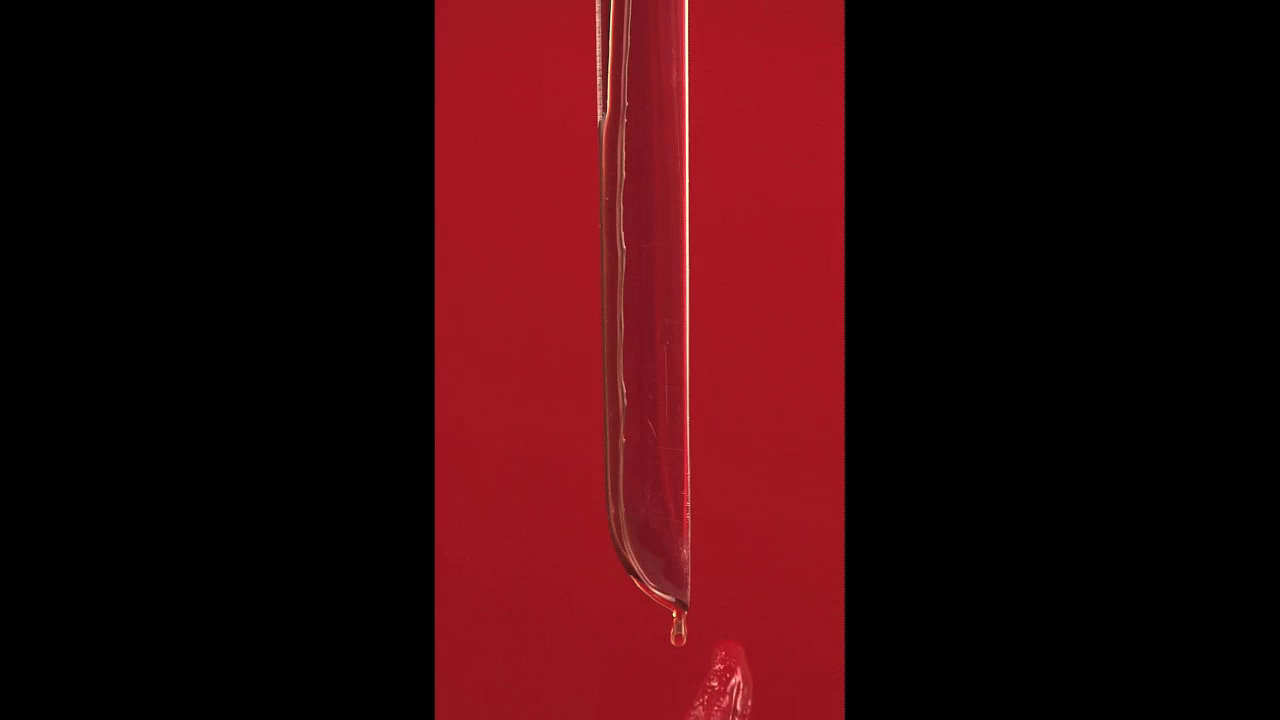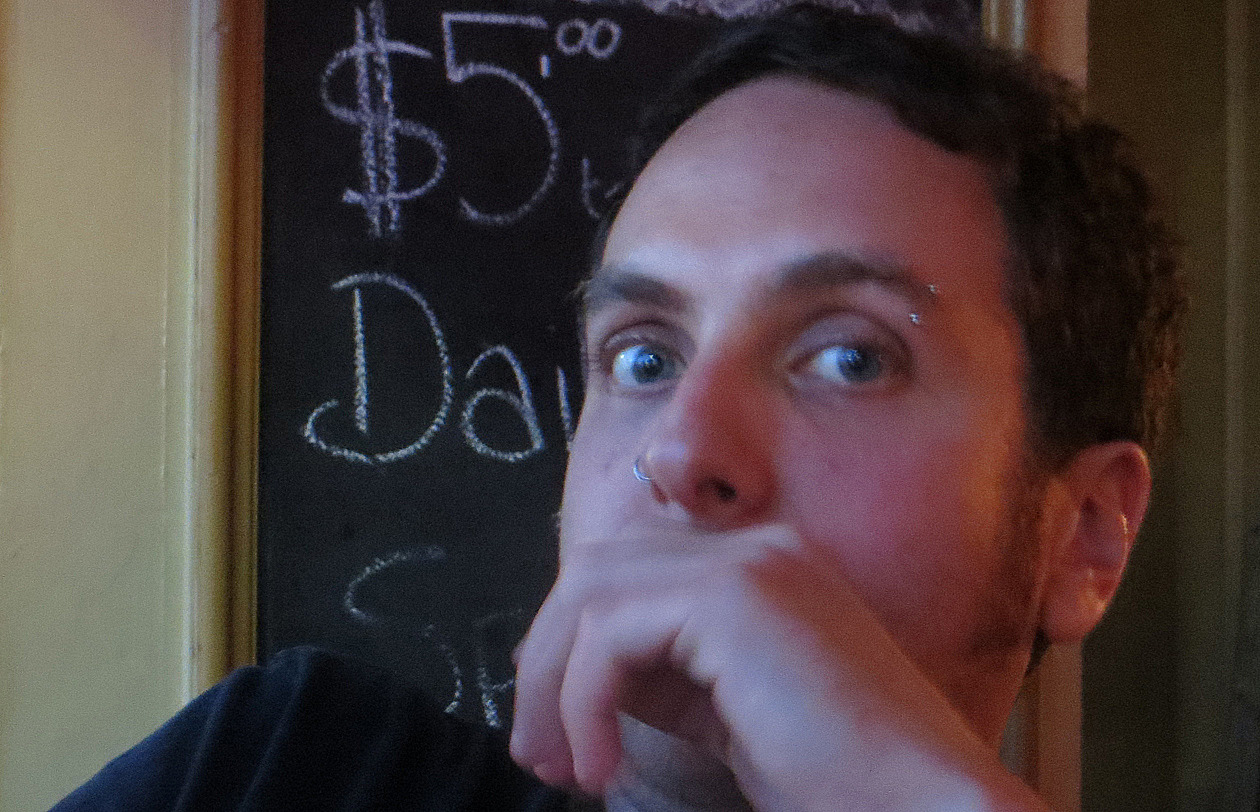
IF I HAD A CHESTERFIELD
Brandon Cronenberg dodges superlatives and delves into distorted dreams, comedic masochism, helming a multi-million-dollar feature and that elusive Canadian thing
by Kenton Turk* | Directors Lounge Magazine
A MISTAKE. MAYBE. I could have taken Brandon Cronenberg up on his offer to talk over dinner, but I’ve never been good at juggling speaking and chewing, so his alternate suggestion of meeting at a bar gets my nod. But suddenly hungry, I am forced to wolf down a quick-buy nutrition bar, wiping crumbs from my mouth while getting out of the taxi. I am exactly on time. Brandon, like with our last meeting, is already there.
This is Toronto during TIFF (the Toronto International Film Festival) with all its flapping and flailing, and while this particular Cronenberg is not screening this time around, he will likely show up at this or that premiere, free of the pressure of having to “do the carpet,” as he has in Cannes and elsewhere. This could make it easier to enjoy what’s flickering at up to 48 frames a second up front. Besides, he’s not really a tux-and-tails type. He’ll be at a film event tonight and may decide to dress the part, but right now he’s in a loose-fitting, once-black T-shirt and wearing jeans, and he looks comfortable indeed.
Brandon’s association with Directors Lounge is still a slender one, at present not more but not less than branding it as looking “extremely cool” (first via e-mail) from what he’s been able to see of it (screening programs, press response, on-the-spot pics), sending video greetings on our tenth outing ([DLX],¹ the 10th Berlin International Directors Lounge – his hats-off clip was the very first film to hit the screen) and promising to take us up on our standing invitation to curate a special selection for a future DL fest, maybe including some of his own shorter film assaults. And possibly even stop by one February to skipper the audience through it.
Cronenberg is about as humble as they come in this industry. This could be Canadian understatement to some degree, but it is in any case refreshing. “Say less, deliver more” beats the reverse hands down anytime. On being asked to contribute to [DLX], he demurs with what seems like self-deprecation, a first in Team DL’s collective memory. At our lead-in meeting in winter, a get-to-know-you over hot and cold brews at place called the Lakeview with no view of the lake, his demeanour is comparable to the steady breath of a small, blue gas flame: warm, but definitely low key. It is enjoyable to talk to him, make no mistake, but none of the flip swagger of many of his peers is there. He doesn’t even drive a car.
By this second encounter, with sunlight paving the streets and road and air traffic supplying a constant and sometimes jarring backdrop, he is more of a front element flame. His eyes are wide open in more than one sense. He is watching what is going on around him and thinking about how best to deal with it.
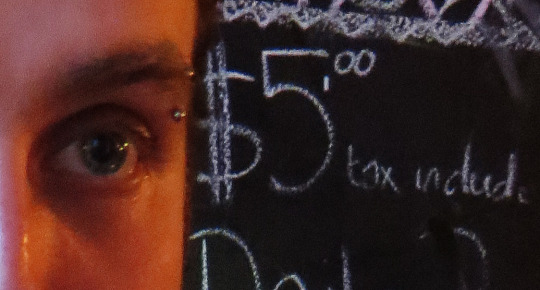
BRANDON’S BIGGEST PROJECT so far has been his bleak extrapolation of contemporary celebrity worship gone self-invasive and self-destructive. Antiviral is all antiseptic walls and understated anxiety, wish fulfilment where the wishes should never have been formulated. The first-timer is both author and director, securing the desired performances from fresh screen mimes Caleb Landry Jones (looking badly in need of a month in the sun) and Sarah Gadon as well as first-generation droogie Malcom MacDowell himself. (Very nice guy, likes working with new directors, he says.) The film gets its first chance at an audience in Cannes, in competition for the “Prix Un Certain Regard,” a special section initiated to recognize young talent with innovative and daring works. A slightly tauter version (six minutes lopped off) goes on to share the Best Canadian First Feature Film prize at TIFF later that year. The storyline revolves around the idea of fans vying for infectious diseases from choice luminaries to gain a connection that goes under the skin and into the veins. Fans injecting themselves with their idols’ diseases – there’s an obvious metaphor in that, although Cronenberg avoids these in conversation. That “viral” in the Internet Age has become a term that denotes a surge of click-and-reblog popularity while retaining the aura of disease is also surely not lost on him. Nor is his turning to the flip-side of the present-day carb-and-calorie-counting health vogue-slash-mania likely accidental. The abilty to turn situations around in your hands, to swirl them around on your tongue to access varying flavour-sensitive zones, is the mark of a thinking author/director, and one that will make an audience think. Even if they don’t necessarily go home in the cozy glow of a happy ending.
AT THE MOMENT, Cronenberg himself seems to be thinking about last night, from what he discloses a boozy affair he may be still recovering from, although if so, then with easy-going refinement or consummate submersion. Our seat at the front is a compromise between sitting outside (too loud) and sitting farther in (too dark). Air conditioners hum in windows up and down the street. Brandon has already ordered and is already working on a cold one, its foam clinging to the inside of the glass.
Rather than go for the good (too easy), I ask him first about the bad… the last bad idea he had. In or out of film.
He seems mildly taken aback by this kind of opening salvo. “What was the last bad idea…?” There is a longer pause while his green-blue eyes explore a space somewhere beyond my head. I try to help by suggesting it might be whatever went down last night.
That isn’t it. “No, I was OK last night,” he swears with an conspiratorial grin. “I don’t regret it!” Like Piaf. But soon we hit on something he at least regrets hasn’t happened up until now.
“I haven’t been to Berlin. I’d really like to go, actually. I applied for an artist-in-residence that happens there but I didn’t get it. It’s probably all right, because I think you have to be there for six months as a filmmaker, which would be amazing, but I don’t know if I can get away for that long.”
As I will find out later, Brandon is busy with a number of film and non-film forays. But not too busy to occasionally hit the road – in true “Have film, will travel” mode, he does get around. “The last time I travelled was for the movie. Do you know the Sitges Film Festival?” he asks. “In Spain – it’s about 30 minutes from Barcelona. It’s kind of a resort town. They have a genre film festival there. That place was really, really great. I was only there for a couple of nights….”
What got his attention? The festival or the place?
“A combination of the two. It’s on the coast, this really beautiful Spanish coast, and the festival’s great because it’s all genre geeks, so there’s a good vibe to it; it’s not very pretentious, and everyone’s there for the love….”
That’s rare these days. No question. Enough to make Sitges stand out in Cronenberg’s memory. Again nodding to understatement, his other European travels target the little countries: Andorra, Luxembourg, Liechtenstein. I continue by trying to get him into superlative gear to start, just to explore the reaches of his experience up to this point, a kind of groundwork for other questions. Best film set moment, for example? Only fair, since I first hit him up with that “worst idea” question.
Here, I don’t get him to play ball so easily. “To be honest, I find it so hard to do ‘best of’ questions because my brain just doesn’t work like that.”
I can see that, and some sense in it, but push the point a bit, saying it’s easy to get a fast idea of someone’s parameters that way, and know that everything else fits between. If someone says their most physically painful moment was breaking their leg in three places, ultimately twisting it off and being forced to stitch back it on by themselves, you’ll know not to come with complaints of a scraped knee. “No, I know the value of those questions,” he affirms, “it’s just my brain doesn’t work that way at all. It’s a problem because people love those questions. Anything from, you know, even just top five films or whatever.”
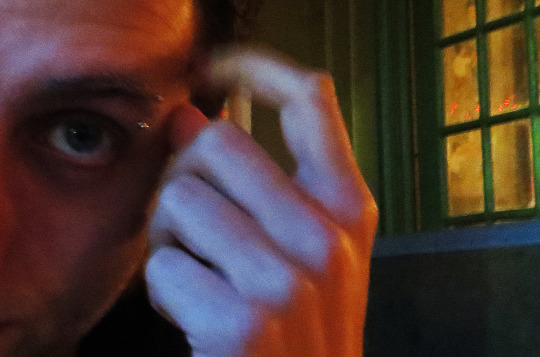
Agreed, I find that kind of question almost impossible to answer. But that brings up a better question: Just how does his brain work?
THE FILM ANTIVIRAL is marketed (to the filmmaker’s chagrin) with the tag line, “From the mind of Brandon Cronenberg.” It’s not hard to imagine that there is a certain amount of pressure in being swept up into a dynastic line of visionaries. Or having millions of dollars put up to bring your brainwaves to expectant audiences. The problem may be in satisfying a vision and the necessity of commercial viability when working on feature film scale. You can hear a fair deal of talk from directors about the need to challenge an audience. Most features, however, imply another side. The comparison is easy to make at the moment – I have actually just come from a having a drink with a film producer who told me about being between two worlds, the arty and the commercial. The claim: people lose an audience when they’re just being arty. How does Cronenberg see that?
“It depends on your audience. I know a lot of people who just don’t want to see commercial films anymore, because they can’t stomach another superhero film – it’s just the same experience over and over again.”
How about commercial and good? What would qualify?
Cronenberg reaches all the way back to the early 70s. “The Godfather, I think, some of those…” he says, considering titles. What about “exotic” Euro-films that once had people lining up outside North American movie theatres? The Tin Drum, Diva, Betty Blue – is that possible now?
“I’m not sure. I agree, very successful movies now are a little less arty than they have been in the past, but I don’t know….”
No question, there’s pressure to cough up films in the kind of genres that will put backsides on the upholstery in these sometimes gargantuan facilities. Maybe for a two-hour attempt at killing as many brain cells as possible, but that’s another thing.
Even if the aim of many feature directors isn’t (purely) to make megabucks, they likely don’t go out to make something that no one will see just so they can set an artistic halo above their heads, either. But where does the devil come in? How do you find the line between being commercially and artistically viable?
“That’s something that is particularly difficult for a film,” he explains. “Unless you’re doing a really specific type of filmmaking, you can’t just go out and make your film the way you could write a novel or do a painting or write a song. It requires so much money, unless you’re working on a very, very microbudget level. I think that’s always a struggle inherent to the art form, or at least a certain area of the art form. It’s maybe not a question of what’s going to make a billion dollars, but even if you want to make a smaller film that’s just three to five million dollars, it has to be commercial viable up to a point, so you still have to ride that line – unless, if you’re being completely esoteric, you have to accept that you’re not going to get funding from anyone and you have to do it yourself.”
“48 frames per second – a lot of people’s reaction has been that they don’t like it, it’s too real. A lot of the arguments are the same that people were making when colour film first came out.”
IT COULD BE that the answer to the current dilemma of how to maintain the classic movie-going experience lies in innovation. It has in the past certainly been a quandary that has forced innovation (and more) along: Cinemascope, Cinerama, Sensurround and even Smell-O-Vision have all played bait to cinema-goers.
We might have exhausted our possibilities. “It’s hard to be extremely innovative especially with film because it’s been around long enough now that I think from a technological standpoint, it doesn’t advance extremely quickly anymore. I mean, there’s 3D, frame rates….”
Of course, it doesn’t have to be technically, I remind him; it could be for example in terms of subject matter, approach. (Think X-rated dramas in the late 60s and early 70s.) Maybe an entire film narrated while focusing on a knee. Crazy stuff. I personally know at least one screenwriter who likes that, I tell him. Take something that’s insignificant and obsess on it. Over the length of a feature film.
“Really?” Brandon asks, and laughs. Of course, he’s forced to do other things to stay afloat, I let him know. I might be worth something to be able to say it is something new; at the same time you might say you’re testing your audiences big time. But as far as more popular innovations? He has mentioned 3D, once little more than another desperate trick to pull audiences back to the cinema, now improved (less painful) and gaining ground. How does he feel about it?
“3D? I think in the right context, it can be extremely interesting, but I think it doesn’t necessarily enhance the experience. At least right now, because the image ends up being darker and a little harder on your eyes. I wouldn’t want to watch a great lot in 3D. But sometimes people use it in interesting ways, like Cave of Forgotten Dreams, the Herzog documentary, did you see that? He shot it in 3D, but the thing is, he went into these caves, and they were allowed to film very, very old cave paintings; I think they were the first ones to be able to really film it. But because the paintings are on these walls which obviously aren’t completely flat, shooting it in 3D was a brilliant idea because then you’re watching the documentary, and you see not just the images but the shapes of the images on the cave walls.”
A far cry from Bwana Devil and It Came From Outer Space. This is about giving film a further dimension, maybe making it more real, switching on our sense of depth. If film in fact needs to be real. Does that matter at all?
Ambivalence. Or thinking in multi-angles. “I don’t think it needs to be real, but I also don’t think it needs not to be real. It’s interesting … I haven’t seen the new Hobbit movies yet. I was interested in seeing them because of the 48 frames per second thing. A lot of people’s reaction has been that it’s too smooth… they don’t like the motion of it, it’s too real. I have the feeling I’ll react the same way to it, but it occurs to me that a lot of the arguments are the same arguments that people were making when colour film first came out.”
And when sound film came out.
Agreement. “And when sound film came out.” Admittedly, that changes the medium immeasurably.
“But even colour film. A lot of those old arguments, if you look the old film theory essays, they were saying, ‘No, film… it needs this ghostly, unreal quality, that’s its charm, and when you have colour film, it’s too real.’”
Assuming the colours are real colours.
Agreement again. “Assuming the colours are real.” Our waitress interrupts to ask about the golden brew that has disappeared from our glasses. I keep thinking of the magic quality to Harryhausen’s effects in Mysterious Island or Clash of the Titans, where every frame of stop-animation is visible. Less real, more enthralling.
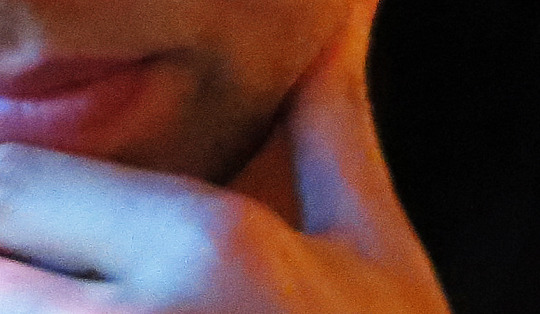
“Not that you only have to work in extremes, it’s a question of something that’s deliberate and satisfying, rather than just a product of a lack of control or focus.”
OF COURSE, FILM IDEAS, enthralling or not, don’t simply spring into life as fully-grown creatures; even the best brainchilds will need to be fleshed out and gingered up by someone willing to put in the hours and sweat. Or tamed. This can be a question of how, and how much. Films can and do, often enough, lumber under good intent. On the maxim of “Less is more,” does Cronenberg agree? Disagree?
“It depends how far you go with it. It’s about doing something that feels deliberate that’s obviously an attempt at something rather than taking something that’s middle-of-the-road. If you do something that’s minimal deliberately, and you’re really owning that and that’s a stylistic decision, that can be more, but going in the opposite direction in a very deliberate way, I don’t know that’s necessarily bad. Not that you only have to work in extremes, but one isn’t obviously better or worse; it’s a question of something you have control over and something that’s deliberate and satisfying, rather than just a product of a lack of control or focus.”
Overcrowding and overloading are indeed bogs on cinematics’ moors. Minmizing dialogue is difficult, but rewarding, most say, in the end. Music as well, where it is and isn’t, can make or break a film. It seems like a typically Canadian thing to allow more space, maybe an atavistic impulse stemming from the fact that 99.9% of this country is unoccupied. Although that could mean more space than might be good for the film. Think of Last Year at Marienbad, all empty space, moving from room to room….
“There isn’t one approach that’s necessarily better or worse,” he reaffirms. “It’s all to do with the rhythm of the film.” Here he stops to let a jet pass overhead, one of several that blast our conversation into momentary oblivion. He continues as if on cue. “Sometimes you’re in editing and you’re looking at a shot and it feels rhythmically wrong somehow, and the question is, do we take away from it, or do we add to it? And you can only get to that by trying it. This feels too long, say. You’re cutting, cutting, cutting, and it’s still not working, and if anything, it’s getting worse. Then you say, let’s try actually even making it longer. Sometimes that works.”
This is assuming the basis is there. There has to be a spark. I’ve come back to musing on how Cronenberg’s brain works, where and how sparks fly. For example: Does he dream in colour?
“Yeah!” This he utters with some measure of surprise. He turns it around. “Do you not dream in colour?”
I do, I tell him. Sometimes. But they say that most men don’t.
“Really?” Again surprise. “I keep having dreams where in the dream I think what’s happening is an amazing idea, that I really should write it down, and as I’m waking up and realizing it’s a dream, I think, oh, this is it! This is an incredible story! Then I wake up, and 30 seconds later I think, that was completely incoherent, it doesn’t make sense whatsoever….”
Precisely that could be the interesting part, I let him know, the incoherency. Does he write them down?
“Not those ones!” This may be the goldmine, however, an El Dorado for someone like himself steering clear of comedies, coziness and caped crusaders. Artists are often little more than conduits. The best ideas come out of left field, unexpectedly. Antiviral’s central idea began with Cronenberg sitting at home with a cold – somebody else’s virus. When I tell him of a bizarre dream configuration of words and disconnected images I developed into a story plot, he stops me with mock mendacity, reaching for a non-existent device. “Let me record this!”
WE ARE STILL GETTING attentive service from the Celtic waitress. With traffic nearby and insistent jet-liners, it can get difficult to make out every word. My little recorder gets pushed closer under Brandon’s nose whenever it seems he’s pulling words out of earshot. It’s good for the occasional smirk, like that scene with a nervous young Redford getting miked in The Candidate. It’s only in the interest of accuracy, I tell him. Besides, my memory is not nearly that developed that I could cough a conversation of this length up without a lot of hazy generalizations.
It should be said this could have happened earlier, our talk, and in a quite different way. Cronenberg offered to bridge the thousands of kilometres that would regularly separate us with an e-mail solution. Questions with time to calculate answers. Maybe easier than my off-the-wall shots, maybe a hint of self-protection. The justification sounds like this: “I think you get a better sense of what someone thinks about something when they have time to think about it.” I ask him to say it once again, but with spontaneity. He gets the drift of my playful needling but keeps backing the same horse. “I find it interesting that people tend to see an e-mail interview as somehow ‘lesser’ because of the lack of spontaneity, but at the same time, most interviews take place during press junkets when people rehearse their answers anyway. You’re not really getting spontaneity.”
A brief pause. I seal it with a mock “You may quote me on that!” and Brandon laughs. I prefer this. Fact sheets are for press kits.
Cronenberg is of course not new to the cat-and-mouse of interviews. The game can be played several different ways, and with widely varying outcomes. As the writer-director has the freedom to create works of plausible or implausible fiction, so does the journalist. I tell him about Tom Kummer, himself (in a neat twist on things) the subject of a film (Bad Boy Kummer), a Swiss reporter for hallowed and semi-hallowed journals such as Germany’s Süddeutsche Zeitung and Der Spiegel among others who sidestepped the tedium of scripted verbal Pablum by putting words of rare insight (or inanity) into the mouths of the likes of Mike Tyson and Pamela Anderson. In print for millions to drink in. And presumably swallow. This is my excuse for the mildly intrusive recording device.
But he knows the drill, that fiction-as-fact is a many-armed monster that breathes jet flames of titillation. “I did an interview with one guy,” he contributes. “He didn’t write down anything, and I thought, ‘Oh, this is pretty interesting.’ He didn’t record anything, he didn’t write anything. A few notes. He said, ‘Oh, it’s all up here,’” tapping his forehead, “’I prefer to keep it casual and talk.’”
And was it all “up here,” I ask.
Of course not. “Well then, I read his article, and he was quoting me as though I had been saying things, but he was just making stuff up, it was like….”
Like a film script, maybe. It could be that the journalist fell into a self-made trap of wanting to put forward his own message, utilize Cronenberg to leave a piece of himself, his own spin on things. Maybe all art forms, creative journalism and filmmaking included, feel this particular need – to go beyond the dictated boundaries, become more than the sum of their parts. How to avoid it? What question would he like to be asked?
“Hmm,” he says, and stores it for later.
“Moving directly to BluRay or VOD at a certain point was an indication that your movie wasn’t good enough for theatres. That’s changing because it’s harder and harder to make money from a film unless it’s a superhero film.”
I MAY BE LUCKY ENOUGH to get Cronenberg playing with hypothetical situations (if I couldn’t edge him into the superlatives), so I throw out one about a conventional way to expand on the boundaries of an idea. What if someone said, “I’m bankrolling, let’s do Antiviral 2”?
“I don’t think anyone would say that,” he answers with a laugh. But he can be playful. “Sure, I would love to, I’d love to do it!” Like Jaws 2 and 3D, or Star Wars… franchising, lunchboxes, things like that?
“Yeah, I would love to franchise it! If anyone wants to pay me for Antiviral 2….”
More seriously, Cronenberg has some ideas of how the choice between “arty” and “commercial” will affect the inevitable business side of feature film projects, how it will alter our view of certain marketing moves. “One interesting thing, I think, is – skipping theatres, moving directly to BluRay or VOD at a certain point was an indication that there was something really wrong with your movie, like it wasn’t good enough for theatres. That’s slowly changing because it’s harder and harder to make money from a film unless it’s a superhero film, in actual theatres. But there’s huge business being done on video-on-demand. I think more and more that we’ll see that the only films that really have a theatre life beyond art theatres are superhero films or really huge budget blockbusters, and then really interesting stuff will be available through VOD.”
So offbeat flicks that might have once struck paydirt with broad popularity would now be relegated to boutique film status?
He agrees while disagreeing. “But then that’s less a mark of failure, it’s not like the direct-to-video stigma that used to be there. It’s less relevant now.” I have to say he’s right there. “Direct-to-video” were once painful words. All those Brooke Shields write-offs….
Cronenberg also sees this as a welcome gap-filler. Whatever may have been missing at the local Bijou (films from different countries, in different languages, of different lengths) can more easily be found. “I think now probably more than ever people don’t have to rely on what’s playing at theatres. It’s easy to find anything by anyone from anywhere.”
Still… isn’t there something different about the communal experience of seeing films together in the dark? Almost like gathering around a fire and having tales told and retold?
“There is some value to that,” he concurs, “but also… there are people talking next to you, the sound is terrible, the bulb is too low – it’s hard to have a good film watching experience if you’re picky about that kind of thing. I was at a movie yesterday [a TIFF presentation, ed. note] and there were people beside me who started going, ‘What are we watching? I can’t believe that we’re watching this!’ And they kept on going on about it, laughing to themselves, ‘Ha ha ha, look at us seeing this movie!’”
Brutal honesty can hurt. Maybe he agreed with them…?
“No, no, it was great, they were just being really obnoxious. One of them was talking on their phone and accidentally started playing an ice bucket challenge video really loudly in the middle. I don’t think I got much from seeing that in a theatre with people.”
“The things that have profound impact are somewhat challenging and unexpected and not entirely comfortable. It’s very hard to create that kind of experience when you have a 300 million dollar budget and people ensuring there’s nothing that could put people off.”
BRANDON’S PUNCTURED ROMANCE with where the film industry is headed can be summed up in one word. The broad picture, summed up by veteran screenwriter Devery Freeman: “In the quest for world markets, you are being asked to write in international language such as sex, violence and special effects."²
Cronenberg has a more focused picture. The word that comes up most often over lagers and ales our waitress is happily plying us with is "superhero.” It resounds like a call to battle, and this filmmaker has definitely chosen sides. You would be justified in thinking Cronenberg has a real apprehension of the genre and what it might mean to other less crowd-friendly film projects. And sleepless nights might be justifiable for him, too. All three leading actors in his Antiviral have danced with this particular devil: in 2011, before doing Cronenberg’s film, Caleb Landry Jones appeared as Banshee in X-Men: First Class, Sarah Gadon followed it with a turn as Kari in The Amazing Spider-Man 2 in 2014. Culty anti-hero Malcolm McDowell jumped in even earlier, lending his voice (beginning 1996) to a number of animated TV superhero shows, as both Metallo in Superman: The Animated Series and Abraham Whistler in New Spiderman, graduating in 2010 to Merlyn the Magnificent in DC Showcase: Green Arrow and Mr. Makuro in Lego Hero Factory. Superheroics obviously pays bills.
What if someone waved $100 million under his nose, the condition being he make a superhero movie, ‘I don’t care how you do it!’ Maybe he could bring something to the genre? Something remotely satisfying?
“I feel that the ‘I don’t care how you do it’ is the big fantasy there,” he answers, laughing. “Because I think that’s the thing – with those films, there’s so much money on the line, and they’re such big properties and there’s such a fan base built in that the studio wants to please that I don’t think that there’s a lot of freedom there to be able to do anything too interesting.”
Still, there must be some space left to do more than spoon-feed. Assuming that’s important. Maybe there is even an implied arrogance in the very idea.
“I’m not talking about trying to challenge people. What is art is a pretty subjective thing, but to me, often the things that have that sort of profound impact that I’d associate with art are somewhat challenging and unexpected and not entirely comfortable. It’s very hard to create that kind of experience when you have a 300 million dollar budget and all these people ensuring that there’s nothing that’s too unexpected or that could put people off or deviate from a format that’s consistently making money. I can’t imagine how much weight I’d have to carry to be able to shoot a superhero film for 200 million dollars and have anything resembling artistic freedom.”
Brandon is able to back this up with an example from real life of how creative and commercial considerations can clash – and here, we are not talking about a Warholian experiment with the camera turned for eight hours on something that doesn’t move. “Edgar Wright… he was working on Antman for the longest time. And then he left, presumably because there were some sort of creative differences. And he’s not even a non-commercial guy. His movies are crowd-pleasers. So the fact that even he wasn’t able to, for whatever reason, work with Marvel on this project, the fact that someone like that might not be able to find creative common ground with the studio I think probably says something about how specific the format is for that kind of thing.”
THE NEXT FEATURE Brandon shoots presumably won’t have wafting capes and second-skin boots, but may well centre on an insect. Or at least, so it sounds. He is taken with an odd creature from far northern climes, a creature that by rights should not exist but does. He has come back to my question about which question he would like to be asked, and presents it as though it is an offer that will net interviewer and interviewee great new metaphorical insights. “I’d like you to ask me about the Woolly Bear caterpillar,” he submits, already looking satisfied.
OK, then, I’ll take the bait. Maybe this is a window onto his core person. Just what is a Woolly Bear caterpillar?
His eyes light up. “The Woolly Bear caterpillar is a caterpillar which can live through the winter. It can hibernate once it’s hatched, then it turns into a caterpillar. It has a cryoprotectant that protects it from being damaged when it freezes. And they’re very wide-ranging, but in the Arctic, because there’s so little vegetation, there’s such a short period where there’s actual vegetation that’s available for them to eat, they freeze for the winter, for most of the year, and put this on. Then they come out for maybe two weeks when there’s vegetation, and they start eating it, and then they freeze again. This can go on for years, ten or more years, until they have finally have grown enough, and then they find a mate and turn into this moth and then….”
I want to do my part, and submit, somewhat fatalistically, that they probably die.
“And then die,” he confirms. “But the fact that they can actually freeze and live frozen in the Arctic for, you know, ten, fifteen years is pretty amazing, I think.”
Hmm. And does he see himself in that scenario?
“No, I have no cryoprotectant.”
Oddly enough, a cryoprotectant is something I can imagine one of the Fantastic Four or the X-Men having. So capes and boots might not be too far out of the picture. Maybe in some sort of metaphorical sense?
“No, it’s not a metaphor. But I find that really interesting….”
“I couldn’t really decide what I wanted to do. That was part of why I got into film – it has elements of visual arts and writing and music. Torture everybody, it’s great!”
IT CAN BE COLD south of the tundra as well. There is a stand-up comedian in the back room of the bar, massaging his audience with the fingertips of humour. It is not going spectacularly well from what is filtering through, if in fact it is going at all. Brandon is only occasionally distracted by his unwitting comrade-in-arms in the fight for an appreciative audience. It may be that his jibes are too subtle, that there is too much “wise” in his wisecracks, the comedic equivalent of direct-to-disc artiness in the film world. Or he may just be bad – there’s too much ambient din between us to be sure.
But the affinity with struggling inventiveness is there. And he knows the worst reaction is… none at all. “If only there were hecklers!” he says out of the blue, a plea that might not be shared by the latter-day jester trying to work the room. I hear neither giggles nor jeers at this point. Maybe there’s no audience. He’s right, taunts would be more useful than silence. An artist of any discipline can work better with opposition. Work with it, make it part of the show. Is this part of the Canadian pysche, not invading the performer with catcalls of censure?
Brandon is sympathetic and starts in on stories of other comics suffering a slow death in the limelight. And what the reaction might mean. “People would just not pay attention,” he recounts, recalling similar floundering shows he has witnessed. He gives his beer bottle a stroke. “We were talking about the Canadian thing. I feel like that’s a Canadian thing. You go up on stage to be a comedian, and no one will pay attention to you, but no one will get mad at you either.”
That sounds frighteningly like Night of the Living Dead. The living brain-dead.
“Yeah, it’s like, it’s good enough that you’re trying, you know? We don’t really care, whereas I feel that in a lot of other countries, if you go up on stage, everyone’s going to look at you and expect you to do something great and if you aren’t great, they’ll throw something. Whereas here, no one pays attention. So you get comedian after comedian, these poor Humber College students doing these showcases at some sports bar. It’s like this masochistic event where they go and tell their entire set to the backs of these people, or to the wall….”
It could be the trouble lies in trying to wear too many hats – submit to academia and audiences in turn. Here may be why there is a semblance of sympathy. Feature filmwork is not enough to keep Brandon happy, either. There is the award-winning short Broken Tulips,4 which paved the way for Antiviral. A video for Animalia’s track “Stifling”³ (described by Moviepilot as “nightmarish,” certainly a little painful to watch) is another example. He has non-film projects going, too, enough to keep anyone off the street. One he mentions is a book of poetry to illustrate. His own?
“No, a friend of mine’s.” So he’s an illustrator as well? “Yeah a little bit,” he answers. More understatement. “And I’m collaborating with a friend on a video game, and I’m meant to be writing a segment for a comic book that’s supposed to be illustrated….”
Just a moment… do we hear “superhero” here?
“No, no,” he promises, “it’s actually an old school horror comic. There’s a Kickstarter for it now.” Still, having a lot on the back-burner can prove fatal in terms of following anything through. “Yeah,” he agrees, “I keep on having to put everything off.” DL may have to get over to Toronto to make the promised collaboration happen.
With this number of parallel projects, it occurs to me I’ve assumed filmmaking is Cronenberg’s first love, but I could be wrong. Maybe it’s only his second or third. Maybe he’d rather be a welder. What would he like to do most, apart from this?
“I don’t know…” he begins, sifting thoughts. “I used to be very interested in being a visual artist, mostly ink illustrations, but also painting. Also, I really wanted to be a novelist and write short stories and try to write a novel, and I was in a lot of bands and…”
Here I stop him. This sounds suspiciously like my own life history. What did he do in music? What did he play?
“Bass,” he says. Paul McCartney, I’m afraid, in the Beatles. “But I wasn’t the frontman.” Has he ever thought about adding another duty to his filmmaking chores? Did he compose as well, or just play in the band?
“No, I wrote some. But the thing is, I couldn’t really decide what I wanted to do, and that was part of why I got into film, because it has elements of visual arts and writing and music….”
My thinking exactly. You can satisfy a lot of needs or torture various audiences at the same time.
Full agreement from Cronenberg. “Yeah, torture everybody, it’s great!” Already conceiving, writing and directing his first major project might not be enough for someone whose eyes veer from the centre of the highway to the off-ramps. He could develop this into a collaboration of one – take on composing duties as well. And possibly more. Auteur extreme. “Do the composition myself?” he asks. “No, I don’t think I’d want to do that because there’s often not a lot of time set aside for writing music, and it happens in a panic during other post-production processes, and I think it would be extremely difficult. I know some people do it. John Carpenter does it. But I’m also not such a good composer; I don’t think I could really do soundtrack stuff. I wrote, you know, ‘band stuff.’ But it was very helpful having musical experiences, to be able to talk to a composer and have at least a sort of basic sense of how music comes together and of music editing and composition is useful in terms of directing.”
Maybe better. It could get lonely when you are the only one on the set.
OUR COMEDIAN MUST BE doing a little better – some mild applause seeps in from the back room. The stage can be a lonely place when nothing is coming back from the stands. Brandon’s own experiences with audiences have luckily been less fraught with missiles and mishaps. The A-level film festival circuit is generally (although not always) more civilized. There’s something about tuxedos and tomfoolery that doesn’t mix. But it is possible they carry their own drawbacks. How does he feel about those extravaganzas? Cannes, for instance.
“They’re a mixed bag. It’s, on the one hand, really exciting to be showing a film to an audience, and obviously, Cannes, it’s a huge honour to be at a festival like that. I don’t get a lot out of the parties and that kind of festival culture. I find that can get tiring after not too long.”
There is also that fabled, torturous beach scene with all those hopeful starlets.
“Maybe the beach scene…” he concedes with another chuckle. “But it was nice in Cannes, it was great because I was there with the people from the film, and we’re all really close, we became good friends. And my dad was there with a film, so my family was there. So that side of it, just sharing that stuff with all those people I like was good, and showing the film, that part of it was exciting.”
And the hotels, cocktail parties, paté de foie gras are… depressing?
“Your words,” he tosses back with a kind of machine gun snicker. Yet he concurs. “Yeah, I don’t find it too exciting. But definitely, there are some people who obviously love that part of it, and the glamour.”
Only that part, I’m sure.
“Only that part, or not only that part, but they’re attracted to the glamour of it. But I would usually rather be at home than at a film party. The other aspects of the festival are nice, when the people are actually into the film, being able to talk to an audience, that side of it.”
There will be no going home to whip up Negronis or Mickey Slims tonight, I’m sure of that, too. Home for Brandon is actually walking distance from here and the filmfest madness a few blocks southward. He could be lying on his chesterfield5 within fifteen minutes, light years away from the world he works in. Tux-free, easy. Or not.
“I wish I had a chesterfield!” he laments. I suggest to him we make this a call-out: “If you have a chesterfield for Brandon Cronenberg, please donate it!”
“I have a futon,” he informs me. A futon. I can conjure up memories of the firm Asian bed-rolls being more than just a place to sleep or a way to save your pennies. Futons used to be a statement of being non-standardized, used to be sexy. Still the case?
“I don’t know; this is like an entry level futon that I’ve had for over twenty years.”
Have to quote that, that’s for sure. What would his colleagues in the Bright Lights Biz think? And would Cronenberg care?
*the author was assisted in the interview by DL writer Angela Turk
¹[DLX], The 10th Berlin International Directors Lounge, Feb. 7 – 17, 2014
²"Collaborating with Yourself,“ from The First Time I Got Paid For It, Da Capo Press.
³with co-director Jonathan Hodgson
4with cinematographer Karim Hussain
5typically Canadian word for sofa
pictured:
Brandon Cronenberg photographed in Toronto (photo: Nick Font)

